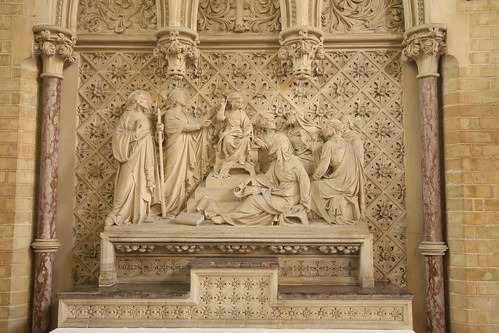An alien from outer space studying the Catholic Church of the last few decades might be puzzled at the frequency and apparent significance of the phrase ‘felt banners’ in Catholic discourse. It seems to sum up much of what is wrong with the Church, at least for many Catholics, but it is rarely explained. It doesn’t need to be, because we have all seen these objects, and we know the significance of the attitudes and processes which led to their production and display.
If I wanted to explain to Zog the Martian what is at issue when felt banners come up in conversations among Catholics, I might say that ugly and inappropriate items of church decoration exemplify and have come to symbolize an attitude of hostility towards objective standards of beauty, excellence, and truth. Zog, however, might find this explanation even more strange than the items themselves. How on earth did such an attitude come to be held by people in the Church, let alone by those with power over what gets hung on the walls of places of worship?
Familiar as the phenomenon is, it is useful to try to articulate what is at issue. The partisans of felt banners do not necessarily prefer ugliness over beauty. Their concern, rather, is to prioritize the contribution to church decoration of the artistically incompetent over that of the artistically competent. Because the latter might be paid, or might not be members of the parish, or might be long dead, their contribution has less value seen as a form of participation in community life. Indeed, the artists who beautified the Catholic churches of yesteryear, and the few who still place their expertise and judgment in the service of the Church, were and are not thinking of their work primarily in terms of community participation, but in terms of objective standards of devotional appropriateness and of artistic excellence.
Read it all there.
Support the Latin Mass Society

No comments:
Post a Comment